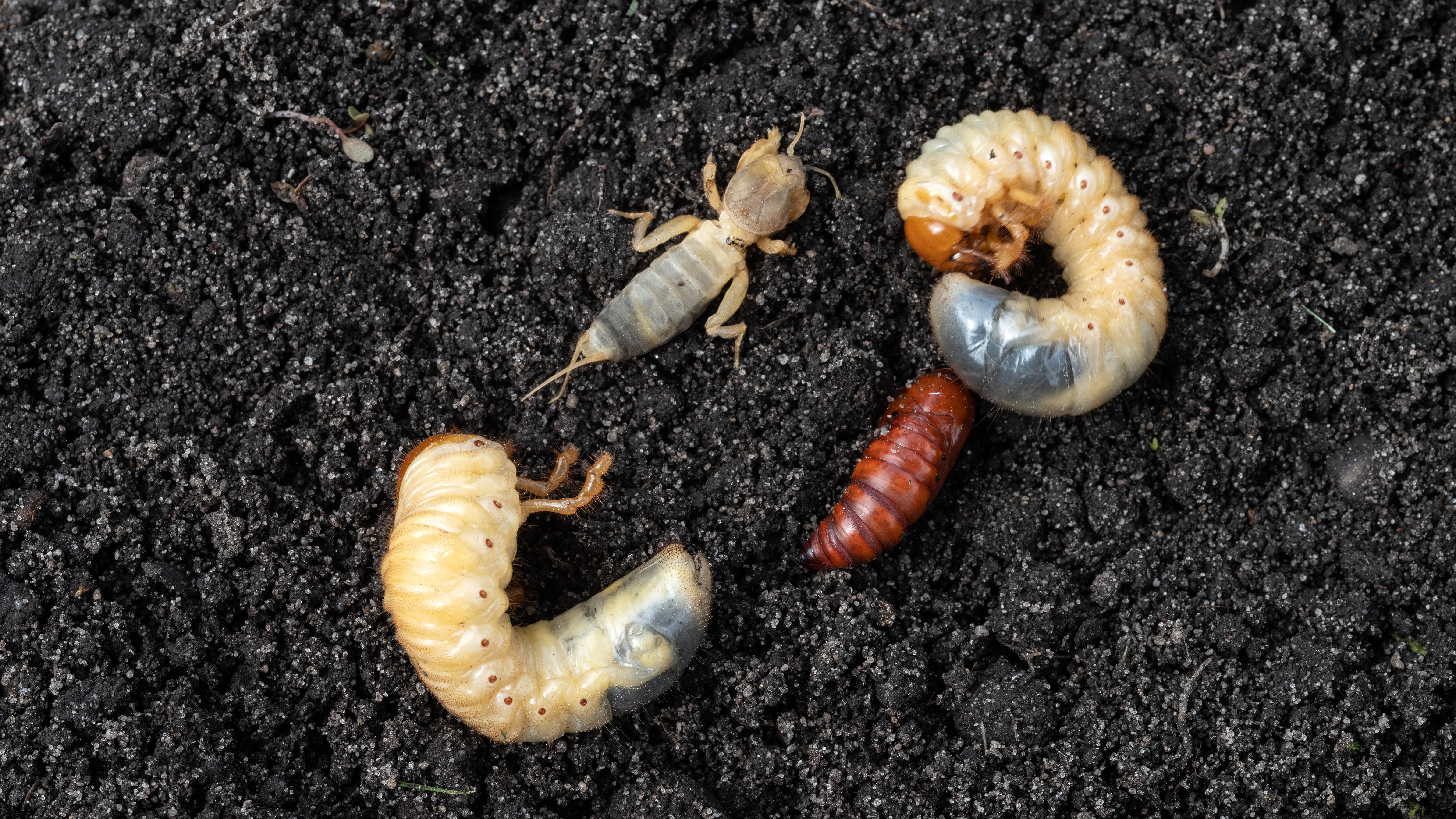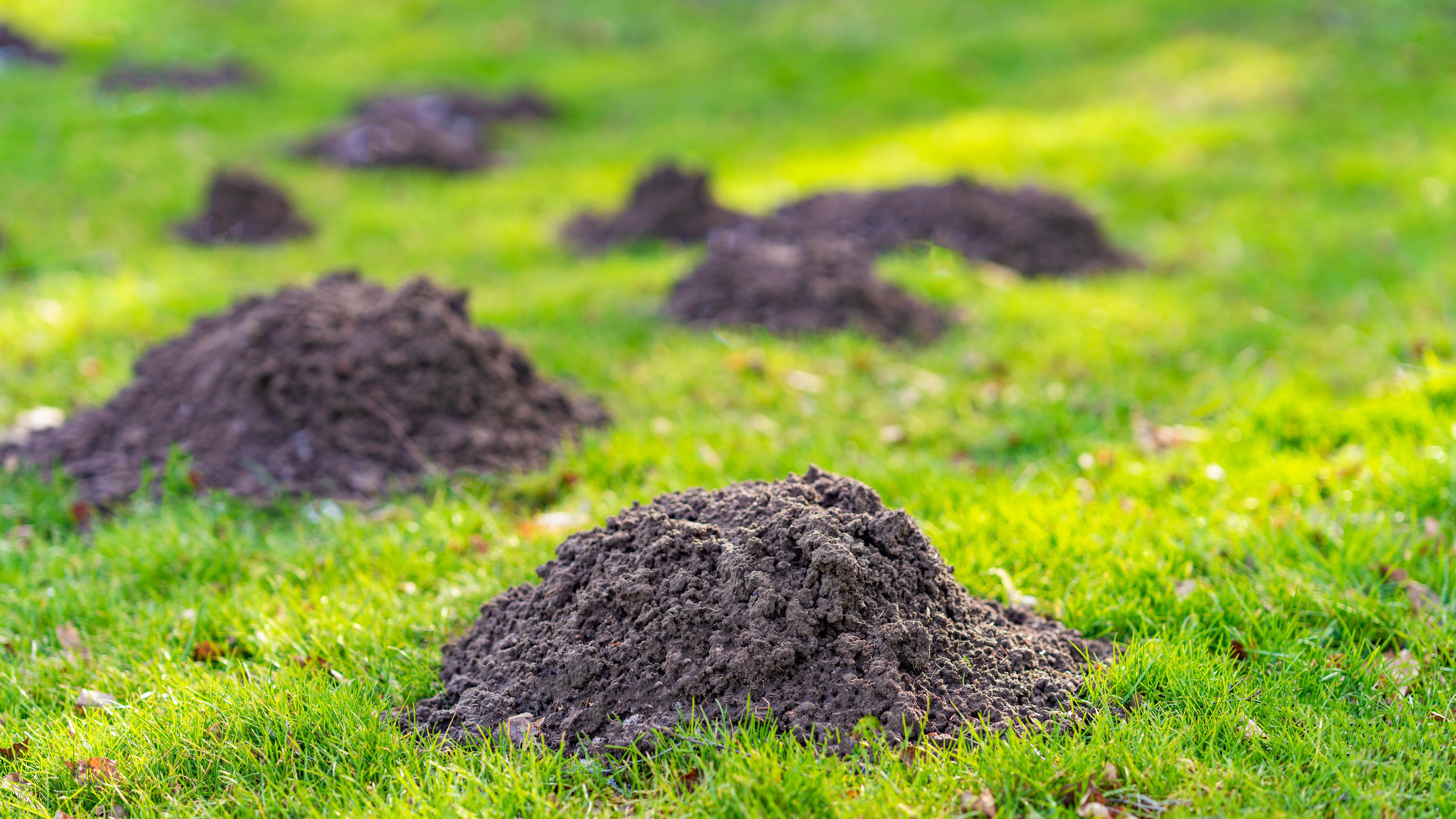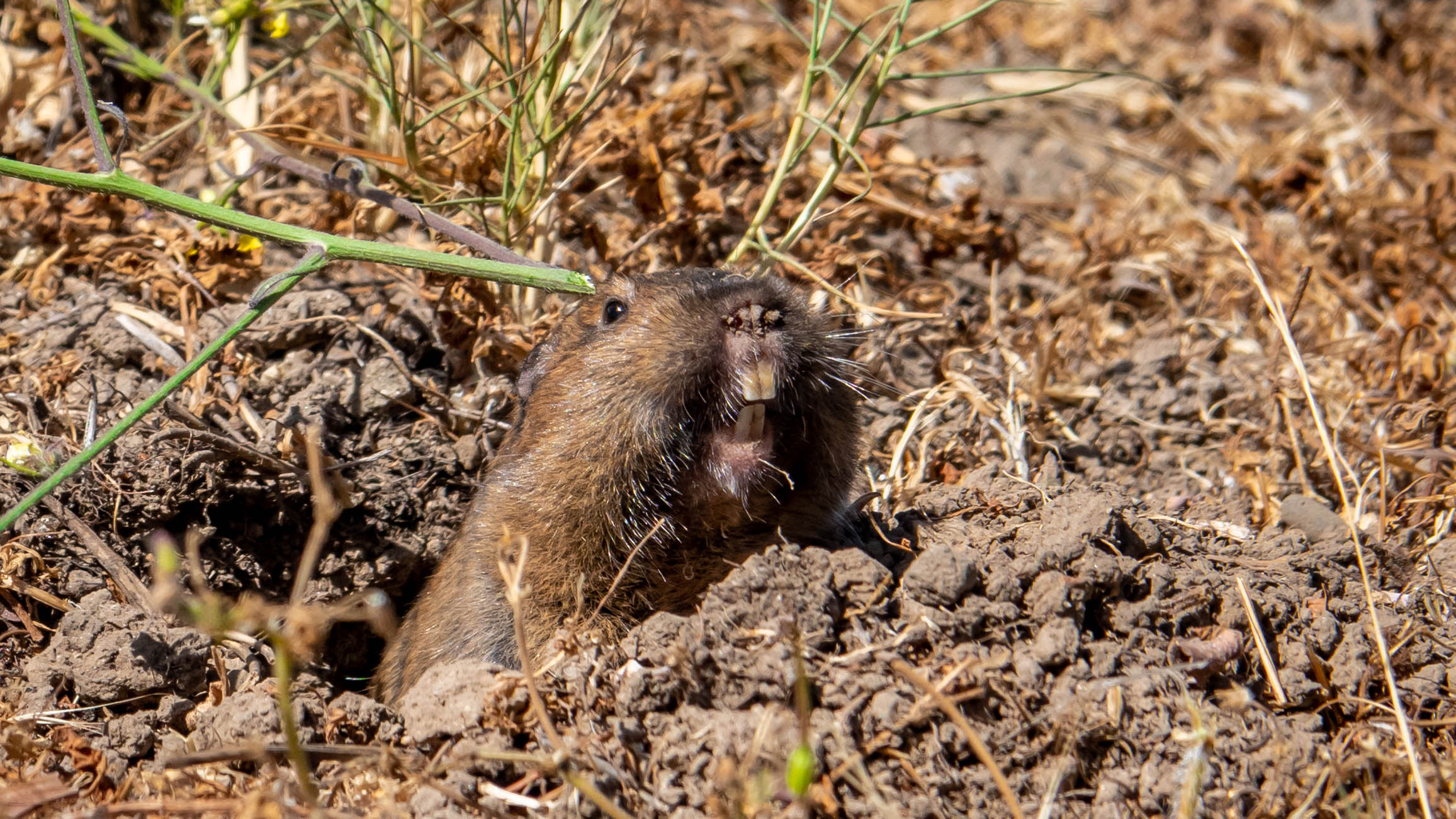How to get rid of moles without hurting them

If you’re looking up how to get rid of moles, odds are these cute, but frustrating visitors have made an appearance in your yard. As a result there are mounds of dirt every which way you turn and dead grass showing up everywhere else. Moles can actually cause quite a bit of destruction in your yard so it’s best if you deal with them as soon as possible, but how can you stop these furry guests from coming back?
Moles aren’t the easiest to get rid of, but with the right method and patience, you can steer them away from your precious lawn for good. What’s more, you can do this without hurting them. Here, we list a selection of home remedies you can follow to get rid of moles — no need for an exterminator. Here’s how to get rid of moles.
If groundhogs are the problem instead, here's 7 ways to get rid of groundhogs without hurting them. And these are the 7 telltale signs you have mice in your home.
How to get rid of moles
Before you start, note that the following methods may not always be effective on first application. You may have to repeat methods or try alternative ones if unsuccessful.

1. Use a mole repellent — You can buy ready-made mole repellent from most garden centers and it’s widely available online too. We recommend Tomcat Mole & Gopher Repellent Granules ($8.23, Amazon). Follow the instructions for best application.
Alternatively you can create your own repellent using three parts of castor oil to one part dish soap. Just mix 4 tablespoons of this solution with a gallon of water and apply evenly to your yard with a sprayer. Be sure to apply directly to the moles' tunnels for the best effect. The taste and smell of the repellent should deter your unwelcome guests.

2. Don’t overwater your yard — Not only do moles prefer soggy soil, this environment will naturally attract earthworms too, which happens to be a mole’s favorite snack. That means, the wetter your yard is, the higher chance you have of attracting moles. Keep your lawn as dry as possible to deter both moles and worms.
Get instant access to breaking news, the hottest reviews, great deals and helpful tips.
Your grass only needs about one inch of water per week to thrive. So if it rains, remember to make the necessary changes to your irrigation system. If you’re looking to plant grass seeds for a whole new lawn once your mole troubles are behind you, opt for a grass or plants that need less water to stay healthy. That way, your soil can be drier in the future.

3. Create a barrier — You can alternatively create a barrier of plants around the perimeter of your yard to keep moles at bay. Plants with a particularly strong scent, such as marigolds, daffodils, garlic and shallots can put off moles while adding more color to your garden. These are just some of the 7 plants that repel moles and keep them out of your yard.
There’s also the option to protect your plants from beneath the earth with wire baskets. We recommend Digger’s 1-Gallon Heavy-Duty Wire Basket - Gopher Wire Basket ($48.97, Amazon).
A trench can also act as a barrier around your yard, but it needs to be at least 2 inches deep and six inches wide to be effective. Fill it with rocks or line it with wire mesh to stop moles from finding their way in.
For more ways to prevent moles, be sure to check out 5 ways to keep moles out of your yard.

4. Trap your moles — You can also go back to basics in terms of trapping the moles without hurting them, but it takes practice and patience. First, you need to flatten and press down the tops of any molehills in your yard using a shovel. Now you need to have two shovels at the ready and sit at a short distance where you can keep an eye on the flattened mounds. Make sure you’re not sitting too close as moles are pretty sensitive to movement.
Wait until you notice the mole returns to re-dig the mounds — the fattened soil should start rising up again. Then, as quick as you can, rush to the mound and plant the shovels into the tunnel on either side of the movement. This will hold the mole in the space between your shovels. You can now dig out the offender and move it away from your yard using a box or wire cage. You may have to repeat this method if you have more than one mole.

5. Tidy up your yard — If your yard has a lot of shelter and hidden spaces, that’s another reason the moles have made it their home. Keep your yard well-maintained by mowing it regularly and removing any mulch from the beds.
By making things more open, your yard will be less attractive to moles, but it will look more pleasing to the human eye.

6. Disturb with noise — You can also try to disturb the moles using sonic spikes. These are placed directly into the ground and essentially emit low frequency pulses to deter moles from their new home. They look a bit like some of the best solar lights.
Some are solar powered so you don’t have to worry about wires trailing across the yard. We recommend ELLASSAY Sonic Mole Deterrent Spikes ($37.99, Amazon).

1. Remove the food source — The thing that’s attracting moles to your yard isn’t plants or roots, it’s actually insects. If you limit this food source, moles are less likely to keep coming back for fresh grub.
Try using products designed to reduce the insect population in your yard. Moles love to eat worms, ants, snails, spiders and all sorts of creepy crawlies, so any insecticides designed for these kinds of critters will help. We recommend Triazicide Insect Killer for Lawns ($7.88, Amazon) — however, many insects are beneficial to your lawn's overall health, and are also a food source for birds, so consider other options before using insecticides.
If all of the above fails, you can always call on a professional and ask for the moles to be dealt with humanely. Just remember that this isn’t a quick fix and getting rid of moles can take time depending on the level of infestation.
How can you tell if you’ve got moles?
First, you can tell by the mounds of dirt which appear on the surface of your yard. As a mole digs through the earth, it pushes the excess soil from the tunnel to the surface, which forms an entrance. You might also notice a lot of dead grass around those tunnels — that’s because as the moles dig, they’re damaging the roots of your grass. There may also be raised ridges across your yard and areas where the soil feels quite loose as you walk across it. It’s worth noting that moles are actually doing some good to your soil as they work; they help aerate it.

Gophers form similar mounds on the surface, but you can tell when it’s moles because they’re usually about 6 feet apart (gopher mounds are much closer together and are often formed in a crescent shape). Moles will also dig up large segments of dirt as they excavate, rather than leaving pulverized dirt behind as gophers do. If you notice your plants have been nibbled at, that's more likely a vole’s work.
You’re unlikely to actually see a mole. But if you do, they are small furry mammals about seven inches in length with a pointed snout and flipper-like claws for digging through the earth. They have no obvious eyes or ears, which is a key giveaway.
What attracts moles to your yard?
Moles come to your yard for food, namely insects. They eat all kinds of grub, but earthworms, spiders, snails and ants are among the favorites. They also like cool temperatures and damp, moist soil.
What’s the difference between moles, voles and gophers?

In terms of size, moles and voles are about the same, but voles appear more mouse-like with small eyes, ears and a tail. A vole's tunnel won't be raised and there will be an obvious opening — these are about two inches wide.
Moles on the other hand are darker in color and have the iconic large paws with claws for digging with no obvious eyes or ears. Gophers are a bit bigger at about 6-10 inches long and have large front teeth and visible eyes as well as a tail. Gophers are herbivores, which means your shrubs and vegetables may take some damage if they've made a home in your yard.
If chipmunks are proving to be a problem in your yard, here's how to get rid of chipmunks safely and humanely. For more tips, tricks, and how-tos, check out our guides on how to get rid of fruit flies, how to prune hydrangeas and how to care for an orchid.

Katie Mortram used to be a Homes Editor for Tom's Guide, where she oversaw everything from kitchen appliances to gardening tools, as well as smart home tech. Specializing in providing expert advice for cleaning and home manintenance, she now works as Household Advice Editor for Good Housekeeping.
